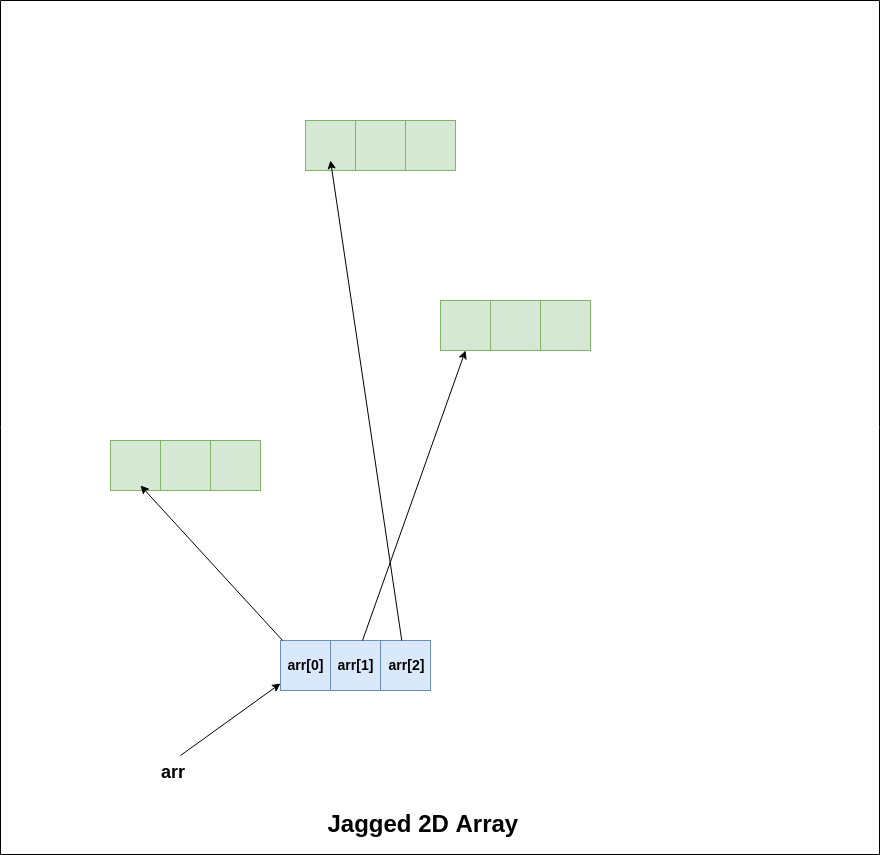Let’s say you want to represent a 3 * 3 matrix using an array in C. Here are some fashions that you can apply:
Static 2D Array
- Create Array:
int arr[3][3] = {
{0, 1, 0},
{0, 0, 1},
{0, 1, 0}
};
- Traverse Array:
for (int i = 0; i < 3; i++) {
for (int j = 0; j < 3; j++) {
printf("%d ", arr[i][j]);
}
printf("\n");
}
- Free Array:
// No need to worry about, as it's created on the stack.
Pros:
- Easy to initialize and use.
- No dynamic memory allocation required.
Cons:
- Limited by stack size (usually signaficantly smaller than heap), not suitable for large arrays.
- Fixed size, less flexible for varying data.
Jagged 2D Array (Dynamic)
- Create Array:
int cols = 3, rows = 3;
int **arr;
arr = (int **)malloc(rows * sizeof(int*));
for (int i = 0; i < rows; i++){
arr[i] = (int *)malloc(cols * sizeof(int));
}
- Traverse Array:
for (int i = 0; i < rows; i++) {
for (int j = 0; j < cols; j++) {
printf("%d ", arr[i][j]);
}
printf("\n");
}
- Free Array:
for (int i = 0; i < rows; i++) {
free(arr[i]);
}
free(arr);
Pros:
- Flexible sizes for each row.
- Suitable for complex data structures (like where the size of each row is not uniform).
Cons:
- Requires careful memory management.
- Jagged 2D array is not stored contiguously in memory, so it has cache locality issues if you care about performance.

VLA Dynamic 2D Array
- Create Array:
int rows = 3, cols = 3;
int (*arr)[cols] = malloc(rows * sizeof(*arr));
- Traverse Array:
for (int i = 0; i < rows; i++) {
for (int j = 0; j < cols; j++) {
printf("%d ", arr[i][j]);
}
printf("\n");
}
- Free Array:
free(arr);
- Pros:
- Allows dynamic allocation with variable sizes at runtime.
- Easier to handle than a jagged array.
- Cons:
- Not supported in all C standards. (VLA is a feature after C99).
1D Array Simulation
- Create Array:
int rows = 3, cols = 3;
int *arr = malloc(rows * cols * sizeof(int));
- Traverse Array:
for (int i = 0; i < rows; i++) {
for (int j = 0; j < cols; j++) {
printf("%d ", arr[i * cols + j]);
}
printf("\n");
}
- Free Array:
free(arr);
- Pros:
- Simulates 2D arrays with simple memory management.
- Flexible for dynamic size adjustments.
- Cons:
- Accessing elements can be less intuitive.